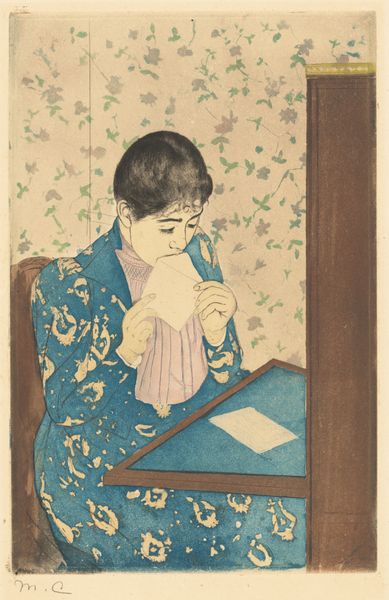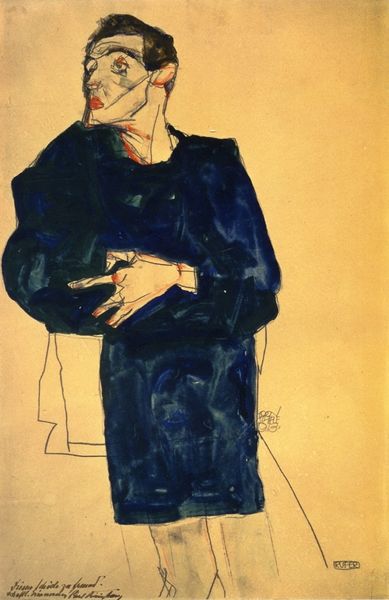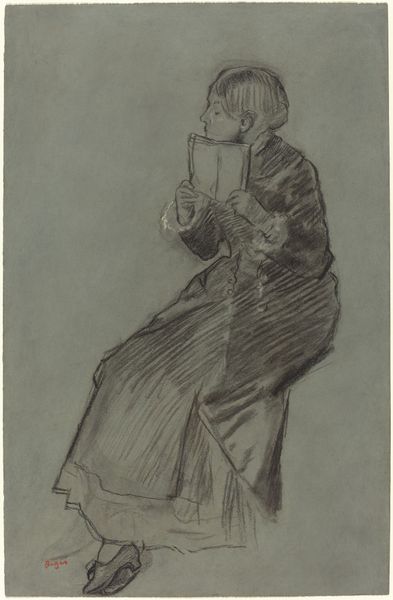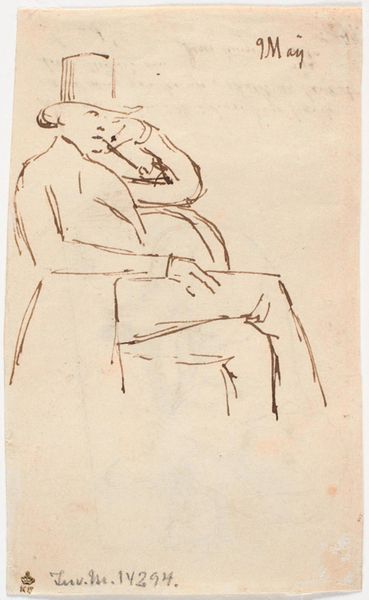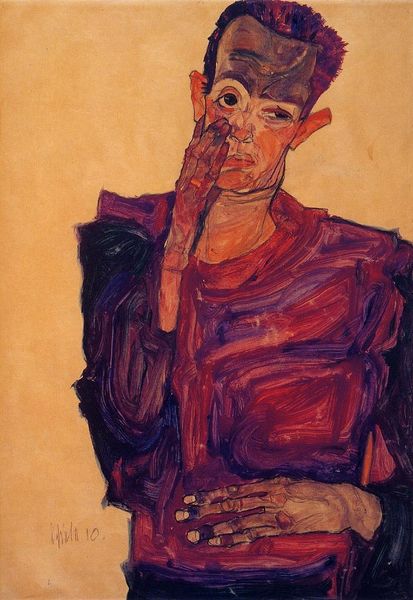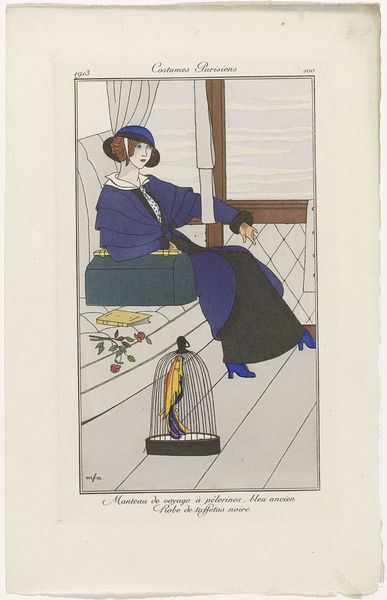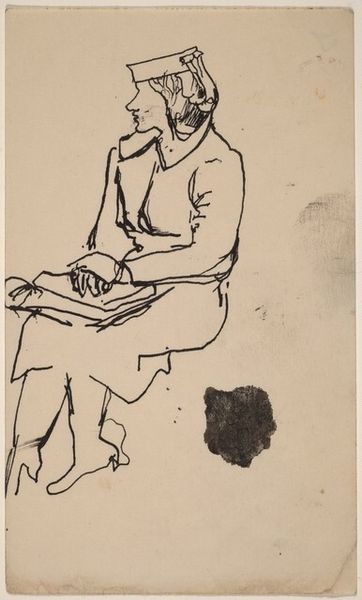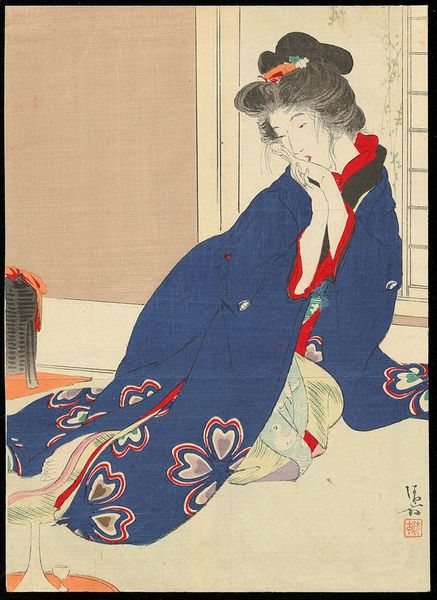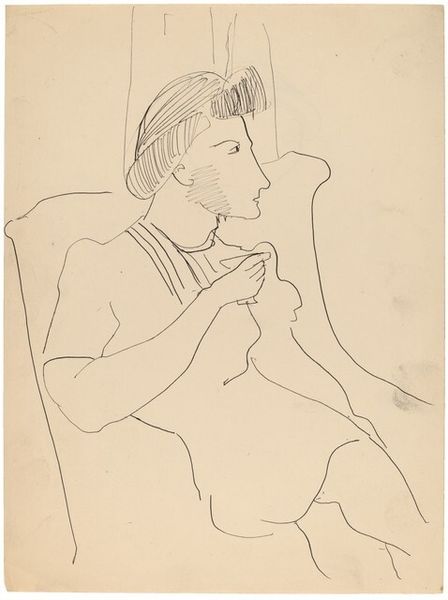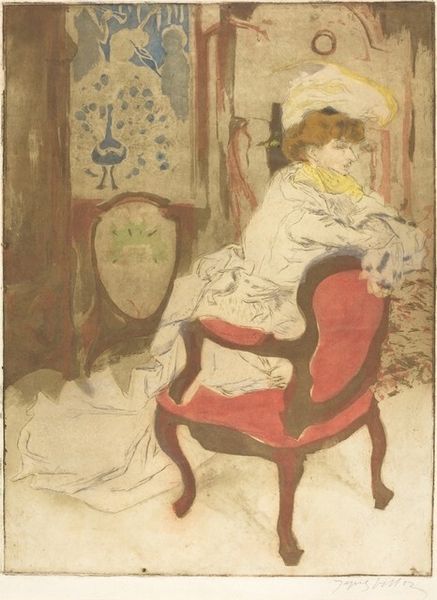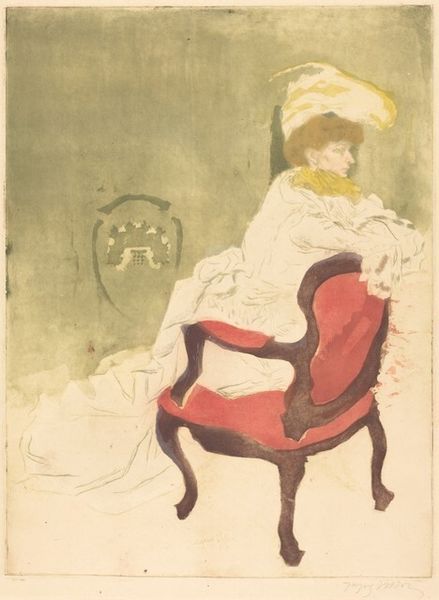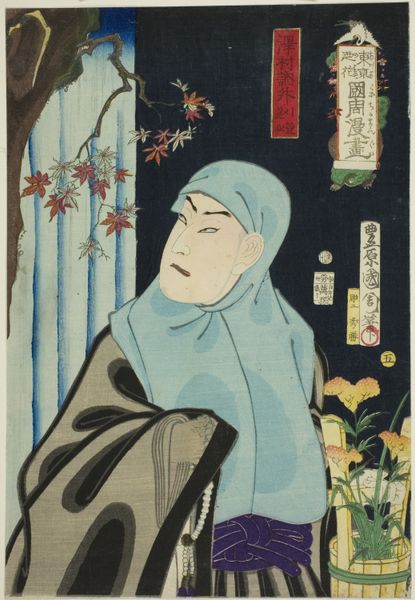
print, paper, watercolor
#
portrait
#
water colours
# print
#
impressionism
#
figuration
#
paper
#
watercolor
#
watercolor
Dimensions: plate: 34.61 × 21.11 cm (13 5/8 × 8 5/16 in.) sheet: 44.6 x 27.5 cm (17 9/16 x 10 13/16 in.)
Copyright: National Gallery of Art: CC0 1.0
Editor: So, this is "The Letter," a print by Mary Cassatt from around 1890-91. I’m struck by the intimacy of the scene, how close we are to the woman. It almost feels voyeuristic, yet she's completely absorbed in reading. What do you see in this piece? Curator: I see Cassatt’s engagement with the societal constraints placed upon women of her era. Consider the closed, domestic space and the woman’s inward gaze. The letter itself becomes a symbol of communication and, potentially, female agency within a limited sphere. How might the content of the letter relate to the limited agency women experienced in this era? Editor: That’s a great point. I hadn’t considered the letter as an agent. Maybe it brings news of opportunities outside that domestic sphere, or even dictates social expectations. But what about the decorative elements? Does the wallpaper or her dress play into that theme? Curator: Precisely. Cassatt, influenced by Japanese prints, uses these patterns to create a complex visual field. These busy patterns might signify the intricate social tapestry that defined a woman's role. Think of the “patterned existence” that 19th-century women had as dictated by men’s views. Where might she insert her individual choice to subvert them? Editor: That makes so much sense! So, it's not just a pretty picture, but a commentary on a woman’s position, her private communications offering a glimpse into her world within broader social constraints. Curator: Exactly! And by placing the viewer so intimately within that space, Cassatt implicates us in observing, and perhaps even questioning, those very constraints. By looking at how women occupy interior and intimate settings in the artwork of female artists, we are presented with perspectives often excluded from the canon of male artists in similar positions. Editor: I'll never look at Cassatt the same way again. I appreciate you framing her work within those cultural boundaries – it gives "The Letter" such depth. Curator: Indeed. Examining artworks like "The Letter" through an intersectional lens unveils rich narratives of gender, power, and resistance. It is exciting to see her pushing those limits through the simple art of choosing a subject.
Comments
No comments
Be the first to comment and join the conversation on the ultimate creative platform.
